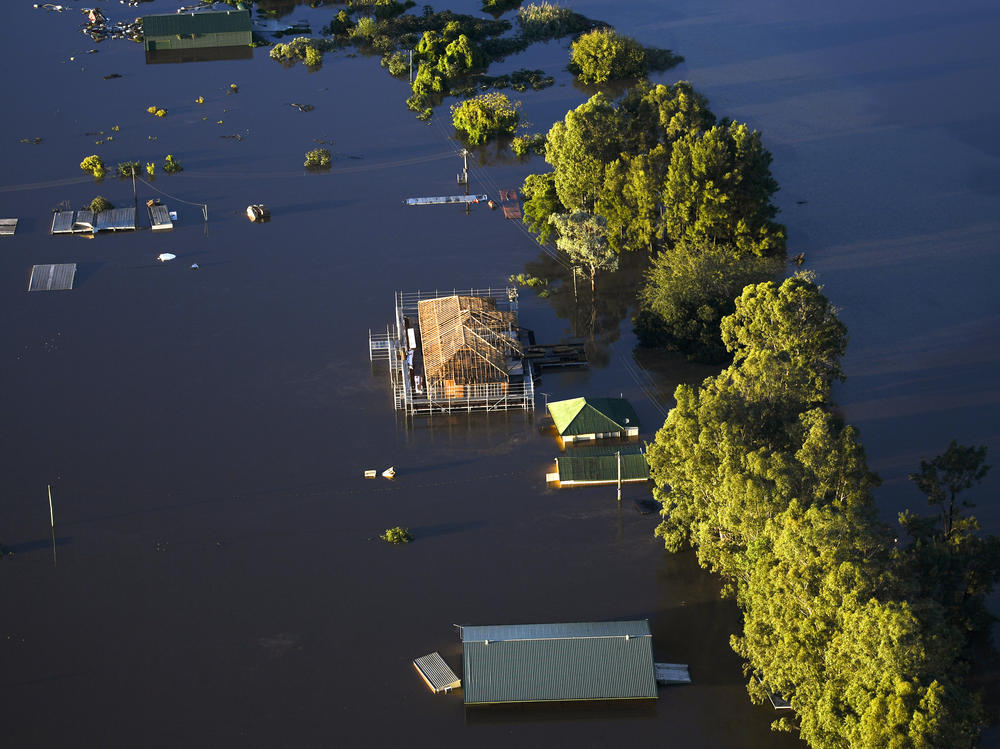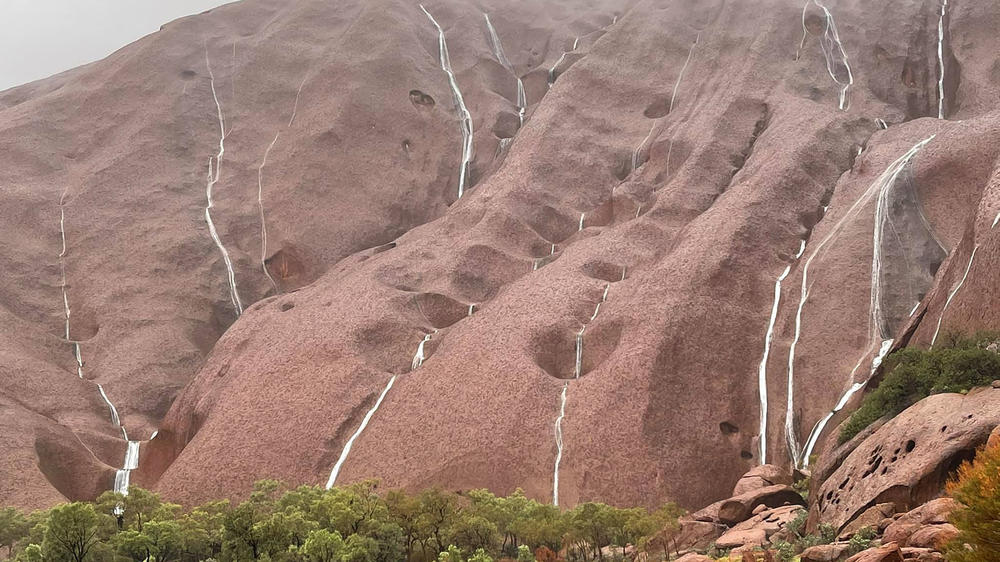Section Branding
Header Content
40,000 Evacuated, At Least 2 Dead In Massive Australian Floods
Primary Content
Days of torrential rain have spawned massive flooding in eastern Australia, forcing the evacuation of some 40,000 people. In the country's arid central section, it has sent waterfalls down the side of the country's majestic Uluru rocks.
Barely a year after devastating bushfires burned through tens of millions of acres in Australia, the country is grappling with one of its worst-ever floods after weather systems converged over Queensland and New South Wales, dumping more than 20 inches of rain in a single day in one area north of Brisbane.
Meanwhile, one area of New South Wales received nearly 40 inches in a week — which Australia's Bureau of Meteorology said had already exceeded the average autumn rainfall less than a month into the season.
The floods, which have submerged houses, stranded cattle and cut off towns, have inundated vast areas along the east coast from roughly Mackay, located about 600 miles north of Brisbane in Queensland, to Bega in New South Wales, some 260 miles south of Sydney.
The premier of New South Wales, Gladys Berejiklian, said Wednesday that residents in Sydney's western regions are under new evacuation orders.
"What we still have to be aware of is the fact that thousands and thousands of people are still on evacuation warnings, that the rivers will continue to swell, that catchments will continue to experience flows of water not seen in 50 years and in some places 100 years," she told reporters in Sydney, Reuters reports.
On Wednesday, the bodies of two men were recovered from flooded vehicles. One man, 25, died when his car was submerged in northwest Sydney. He reached an emergency operator and was on the line for 44 minutes until contact was lost, The Sydney Morning Herald reports.
(More scenes of the devastating floods from The Sydney Morning Herald.)
Near Alice Springs in central Australia, tourists have flocked to Uluru, also known Ayers Rock, to catch a rare glimpse of cascading waterfalls at the reddish-orange rock formation. Park officials say 46 millimeters (1.8 inches) of rain fell there over the weekend – about a sixth of the average annual rainfall in the region. While the event isn't unprecedented, it is uncommon.
"Rainwater on the rock's surface causes it to change colour. From dark burgundy to shining silver and even black, every side of Uluru takes a different shade, making this spectacle a photographer's delight. Following the rain, desert plants bloom and many animals emerge to mate and feed," staff at Uluru-Kata Tjuta National Park said on Facebook.
Although rivers were expected to crest on Wednesday, Prime Minister Scott Morrison warned that the flooding, which has been concentrated along the eastern seaboard, would not remain "just a coastal event."
The Warragamba Dam, located on the western outskirts of Sydney, has been spilling the equivalent of the city's famous harbor in water each day. It's expected to continue its overflow for at least another week, threatening highly populated areas, Morrison said. "We advise that the rain and flood situation does remain dynamic and extremely complex," he said.
Darren Osmotherly, who owns the Paradise Café Pizzeria in Portland, NSW, west of Sydney, told Reuters that damage to his restaurant would likely top a half-million Australian dollars (US$380,000).
"We've had bushfires and COVID and so many dramas this year. No one can go anywhere," he said, adding that the return of sunny skies on Wednesday didn't mean the danger was over.
"People get the illusion that it's stopped flooding but you've got 17 hours of water to come," he said. "The deluge of rain we had yesterday isn't here yet. ... Got to be careful. When the sun's out like this it's probably just as dangerous as when it's running fast."
Copyright 2021 NPR. To see more, visit https://www.npr.org.



